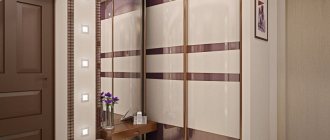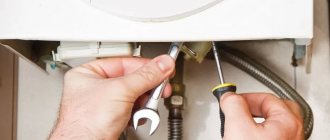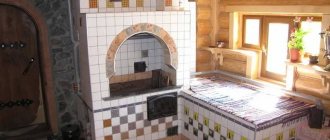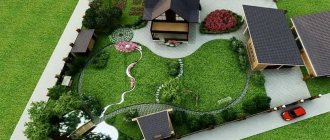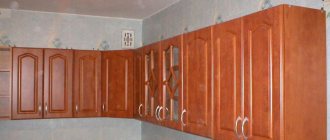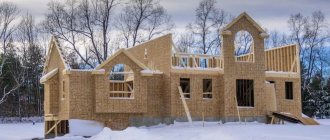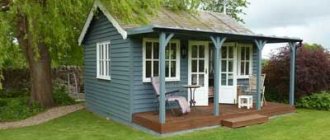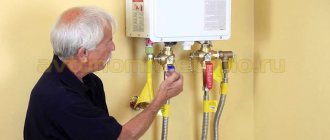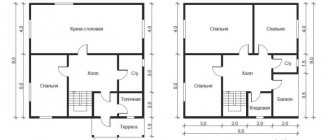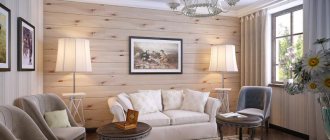There are various illustrative examples of floating buildings in India, Holland, Canada, Germany, and other countries that could not remain unnoticed by their compatriots.
Floating houses have now become very popular even in the Russian Federation. There are a lot of water areas in the country suitable for this type of construction.
Houses that are located on the water have many advantages that will determine the growth of interest in these types of buildings.
How to properly build a house on the water
To build a floating house (houseboat), the same technologies and materials are used as for building a regular house. The key difference is that the base of a house on a solid surface is a foundation, while the base of a houseboat is a pontoon.
The first thing that needs to be done before starting construction of any type of house, including a floating one, is to draw up a project for the future structure. The design must take into account the maximum permissible load, weight and characteristics of the building materials used. It is also necessary to take into account external factors: maximum wave height and wind speed in the water area selected for construction, and current speed.
The optimal location for a house on the water is an internal reservoir (pond, lake) with standing water, a wave height of no more than 1 meter and a maximum wind speed of no more than 15 meters per second. The owner needs to remember that even with slight fluctuations in the water surface, people prone to seasickness will feel discomfort. This will not allow them to live in such a house on a permanent basis.
According to the Water Code of the Russian Federation, the lease of a section of a lake, river or reservoir is carried out on the basis of a water use agreement. The transfer of water bodies to private ownership is not allowed - they are all federal property. An exception is a pond or quarry within the boundaries of a land plot that is private property.
All houses on the water are classified as small floating objects. Before construction begins, the house design must be agreed upon with the State Inspectorate for Small Vessels (GIMS), which is under the jurisdiction of the Russian Ministry of Emergency Situations. After completion of construction, a house on the water is subject to mandatory state registration.
Briefly about the main thing
Based on the design documentation, the developer draws up an estimate. It describes all stages of work and all costs. For each stage, it describes in detail what materials, tools and types of work will be required. Based on these data, the required amount of electricity is calculated to ensure the operability of power tools, construction and auxiliary equipment. As well as the predicted water consumption required for organizing construction and economic activities.
- If a central electricity and water supply network is used during construction, the cost of water and electricity is included in the estimate and paid by the customer according to the approved payment schedule.
- If the customer is responsible for providing the construction site with electricity and water, then the situation changes. The estimate indicates the planned costs of water and electricity, but the customer is not charged for them.
In this case, the contract must contain a clause according to which the customer does not bear financial or any other liability to the developer if the consumption of water and/or electricity exceeds the quota specified in the estimate. In this case, all expenses are borne by the developer, and he also undertakes to pay the overrun or deduct this amount from the cost of his services.
Construction on water: determining the purpose of the structure
In what capacity to use the house on the water, its owner decides based on his goals, preferences and financial capabilities. The result of construction on the water can be a full-fledged house, a summer cottage for seasonal living, or a fisherman’s house for recreation and fishing in nature. It is possible to use a floating house for commercial purposes - as a mini hotel, guest house, bath and sauna complex.
Based on the purpose of use, the total area of the structure, the number of rooms and their purpose are determined. If the owner allows for the possibility of transportation by water, then the base of the house should be a pontoon made of metal or plastic. In the case of a permanent installation of the house, the base will be a standard foundation.
Types of buildings and their design features
Buildings for entertainment purposes are usually built on the water: nightclubs, mini-hotels, holiday homes and others. There is a tendency to build residential buildings, they will differ in type:
- year-round or seasonal;
- mobile or landline;
- placement outside the boundaries of a populated area and inside it;
- location on a ship's foundation, pontoon or piles.
Most often, they try to exploit this kind of buildings for summer recreation. They have proven themselves to be excellent dachas and country houses where you can spend your holidays and relax in nature.
Design version of a floating house Source doverie-omsk.ru
Popular bases for floating houses are pontoons. They are stronger and allow you to choose the type of construction. For example, stationary buildings are fixed strictly to a specific location. It is possible to design a mobile version of the home. It differs in that it can be transported using a special tug or a mechanism provided by the design. Pontoons are considered a reliable structure that will last a long time even in a humid environment.
Transportable floating house Source mrrestavrator.ru
On a note! There are options for floating houses that can be reached via a specially equipped bridge, and there are models to which the path lies across the entire river or lake. That is, you can only get there by water transport.
Preparing a house on the water project
To create a safe, durable and reliable house that can serve its owners for a long time, you need a competent and correctly drawn up project that includes all stages of building a house on the water. In the absence of education in the field of architecture and engineering systems, it is better to entrust the development of the project to professionals - they can be found in river navigation.
What is included in the houseboat project:
- selection of materials for construction,
- calculation of the base/foundation taking into account load capacity,
- engineering project,
- description of the safety conditions of the building, taking into account its features.
See also photos of houses on a cliff above the sea.
Details
Legal nuances of a floating house
The legislation provides for some restrictions for such types of buildings. Their length should be no more than 20 meters, and all buildings can weigh up to 80 tons. If there is a limit for the number of people who live inside the house. There should not be more than 12. The weight, dimensions, and location of the building on the water can be classified as a small-sized vessel. This legal statute can provide several tangible benefits to home owners.
They won't need:
Engage in registration and acquisition of land plots.- Obtain permission to build a house from the administration.
- Register real estate with certain authorities.
- Pay residential property taxes.
Yes, yes, for a house located on the water, you really do not need to obtain a construction permit. But there are still certain disadvantages. It is impossible to obtain a residence permit in such a house, and it is also impossible to obtain a mortgage loan for construction. The construction will need to be registered, and since we are talking about a small vessel, the procedure will be carried out by a special state inspection. It will issue the owner a ship ticket, which gives the right to move around the water area without interfering with shipping transport. The owner of the house also has the right to decorate it with the Russian flag.
Advantages of houses located on the water
It’s enough to just look at photos of houses on the surface of the water to truly appreciate the advantages of such a location. In the warm season, the following will be organized directly on the construction site:
- A relaxing break in incredibly beautiful scenery.
- Bathing.
- Sunbathing.
- Fishing.
Houses on the water will give you relaxation among incredibly beautiful landscapes. Residents will not be left without entertainment and useful rest during the winter season. The house will be located on the territory of a natural skating rink, and you can go ice fishing and skiing. Housing for year-round use is often equipped with a bathhouse, a sauna, and there is also the opportunity to plunge into an ice hole. In any season, such a house will be an ideal place for an outdoor picnic. In winter, you can even take a dip in the ice hole after the steam room. Such a mobile building will make it possible, if desired, to move with the house, without experiencing difficulties in transporting things and the house.
Specifics of building floating structures
Is it possible to build a house on the water? Of course! Most people who want to acquire a personal summer cottage on the water buy ready-made factory-made buildings. But you should take into account the fact that the dimensions of such buildings are minimal. If you need to build a spacious building for year-round living, you will need to build it on special pontoons for a floating house. This will give you a chance to increase the area. Pontoon buildings make it possible to increase the usable area of the building. Pontoon type bases can be made from:
- Fiberglass.
- Reinforced concrete materials.
- Steel elements.
The choice will depend on the size, construction specifics, and also operation. Reinforced concrete structures have high load resistance, durability, and are also perfect for building permanent buildings. Steel structures have decent technical properties. Provided they are assembled of high quality and have reliable anti-corrosion treatment, they will perform their functions for many years. The choice of pontoon will largely depend on the size of the private building. Fiberglass pontoons for floating houses appeared relatively recently, but their incredible popularity is rapidly growing. The materials are highly durable, will not be subject to corrosion and are durable. Moreover, such pontoons weigh much less than their steel or reinforced concrete counterparts.
A mandatory part of the structure must be a high-strength metal frame. It will not allow the house geometry to change. All elements are treated with moisture-repellent and anti-corrosion compounds. Designing a house requires entrusting it to qualified craftsmen. They will correctly calculate the center of gravity, and will also take into account wind loads. When building a structure, materials with minimal weight are used. When creating a structure, materials are used that have increased load-bearing strength and minimal weight. The rooms inside the house should be compact, and when finishing, preference is given to panel materials that can maintain integrity when rocking. It is also important not to use putty or plaster, which will crumble when moving around the house.
There is another option for alignment, which is more economical, which significantly speeds up the alignment process. You can build a house on the water from used shipping containers. 20 and 30 foot containers are usually made to withstand quite difficult operating conditions. It can withstand high levels of humidity, motion, vibration without loss and is durable. The photo shows economical floating houses made from containers.
Communications inside the floating structure
Regardless of the type of residential building or its location, it is required to provide ideal living conditions. If floating buildings are located on the border of a settlement, located near the shore, there is a chance to connect to the central sewer lines and water supply. Comfort inside the house can be ensured even in the absence of bank systems. The modern market offers a huge number of equipment for setting up autonomous communications. The house can accommodate:
- Septic tanks for collecting wastewater.
- Electric generators.
- Containers containing fuel.
- Reservoirs containing a supply of drinking water.
Household convenience can be ensured even if there are no city communications. Installation of such systems provides excellent living conditions. There is no need to create water reserves for domestic needs. A heating system must be installed in a house for year-round use. Fireplace stoves (cast iron or steel) help maintain a comfortable temperature. It is possible to supply a system of electric and gas convectors. It would be advisable to equip these buildings with electric or infrared “warm floors”. It is the fireplace stove that helps maintain a pleasant temperature.
Communications and foundation
If you have designed the pontoon and the building itself, you must resolve the issue of communications.
What needs to be carried into the house:
- sewerage,
- water pipes,
- electricity,
- heating.
Sometimes it is possible to connect to city communications, but this is not always the case.
If the location of your home precludes such a connection, the best option is to purchase autonomous systems. Stock up on tanks for fuel, water and waste water. The most difficult thing to solve is the heating issue - you can’t connect to the city system, and there are three ways left
- Install a boiler for heating (there are many models that operate on different types of fuel.)
- Choose electric heating - but you need to be prepared for hefty electricity bills.
- Installing vacuum solar collectors is convenient, but also quite expensive.
You can also install cast iron fireplace stoves or create a “warm floor” - but this again entails significant electricity costs.
If the house is located within the city, it is usually easy to connect it to the city power grid. If not, autonomous power supply systems remain: solar panels, diesel or wind generators. Their installation is an environmentally friendly, but not a cheap solution. To illuminate a houseboat and keep household appliances running, you will need 100 kW of power. There is no point in paying for more powerful devices.
It is necessary to establish a water supply in the house - not only technical, but also clean drinking water is needed. As with electricity, the easiest option is to connect to the city water supply. If this is not possible, all that remains is to drill a well in the vicinity of the house on the shore. To do this legally, you need paper from the Environmental Protection Agency. Water purification plants and high-quality filters will help turn process water into drinking water.
Another important point is the sewerage and drainage system. The simplest and cheapest option is a sewer collector on land, but it is not always possible to connect to it. An alternative is a wastewater tank or an autonomous sewage system where wastewater undergoes a biological treatment procedure. True, this is not a cheap solution. The main advantage is environmental friendliness, since the water undergoes complete purification.
So, you have resolved the issue of infrastructure and communications. But when building any house, you first need to tackle the foundation. There is a nuance here - a floating house does not have a foundation in the usual sense of the word. Instead, there is a platform like a raft, the so-called pontoon. Since it must withstand the load of a full-fledged structure, it must be a very reliable and durable platform. The designs and materials for its construction are different - you can make it from plastic or steel, reinforced concrete or wood. Plastic is used for small and light buildings such as gazebos on the water, and other materials can be used for a full-fledged house.
But if we are talking about a house on the water, and not a floating house, then a regular foundation is poured: approximately the same as for swampy soil. Often, screw piles and other methods of constructing structures in swampy areas are used for this.
Disadvantages of using piles for home
Pile foundations also have disadvantages, which you should also know about in advance, so as not to encounter unexpected surprises later. A pile foundation is limited in its load-bearing capacity: it is usually used for one-story and two-story houses that do not have much weight.
The construction of such a foundation requires the most accurate calculations at the preparatory stage. In order not to make mistakes in the parameters, it is better to seek help from specialists. In addition, despite the speed and ease of installation, installation of piles usually requires special construction equipment. This is especially true for the construction of foundations on heavy reinforced concrete piles.
If metal piles are used, they must be provided with a protective layer, otherwise the material will corrode over time.
A pile foundation is suitable for any type of soil, but it is almost impossible to install it in rocky terrain. There you will have to choose a different type of base. Sometimes a ground floor or basement is made inside a pile foundation, but such a planning solution is fraught with many difficulties that are taken into account at the house design stage.
Houses on the water: construction technology
So, with the exception of the peculiarities of the foundation (which can be a pontoon) and communications for a house on the water, the rest of its construction technology is not too different from stationary houses.
You need to choose a place without strong currents and rough waters. A quiet pond or lake with waves up to a meter in size is best. The site should not be too windy (maximum wind speed up to 15 m/s)
First, they make a pontoon - steel or reinforced concrete structures are best suited for it. It is important to stick to the existing project.
The easiest and fastest option is to make houses from factory block containers. They can be made to order. If this is a floating house, all that remains is to make a pontoon and then attach the blocks to it. Don't forget to distribute the load evenly around the perimeter.
The frame of the house is made of steel using welding. This is important because of the unstable position of the house - no matter how quiet the body of water is, water disturbances cannot be avoided. The steel frame design avoids distortions of the building.
For the same purpose, the house is finished with cladding panels. Usually they do without putty and plaster to avoid the appearance of cracks in case of strong waves of the reservoir.
It is very important to properly seal communications - taking into account high humidity.
To prevent puddles from appearing on the floor of the house during rain and snow, it is better to install door closers so that all doors and windows close automatically.
A wooden house needs to be treated with an antiseptic and fire retardant. In addition to durability, this will ensure fire safety for the building.
It is possible to build a house of high quality, you can live in it all year round, even in severe frosts. The main thing is to insulate the structure well. You can also install a sauna there.
As for the choice of builders, it is better to attract professionals from construction companies who already have experience with houses on the water.
Ground water level
Groundwater level is the level at which groundwater is located relative to the surface of the earth, determined by drilling wells or by digging a small pit - a pit.
The groundwater level varies according to the topography of the site and depends on the distance from the reservoirs. During the year, the groundwater level constantly changes and reaches its maximum during the spring melting of snow. Water can remain at its maximum level for up to 10 days. Autumn rains also increase groundwater levels. The lowest GWL is observed in winter and dry summer.
It is unsafe to change the groundwater level without preliminary engineering and geological surveys. It is possible to disrupt the surface flow of atmospheric water and provoke waterlogging in neighboring areas. Filling large areas with crushed stone and sand causes accumulation of moisture in the base of the soil, floating and subsidence of the soil.
Tips and nuances
- Regarding documents, you need to obtain a certificate of ownership, then the house must undergo an inspection; after this it can be put into operation. Each house on the water is assigned a number, and the owner must have permission to moor. It's a good idea to insure your home. Please note that you cannot register in such a building - after all, it is officially registered as a floating craft.
- It is important to provide your house on the water with water rescue equipment (rubber boat, lifebuoys and vests) and fire extinguishers.
- If you do not live there permanently, but only use it periodically, you can rent a country diesel generator.
- In addition, the house will need an anchor or similar device that prevents it from moving freely through the water. A large plastic container filled with earth and sand can serve as a kind of “anchor”. Usually houses on the water drift near the shore near the suspension bridge, and the anchor prevents them from floating freely.
The construction of a house on the water has its own characteristics, mainly related to the construction of a pontoon and the installation of communications, as well as the preparation of documents. A well-insulated and equipped houseboat can become a full-fledged home for a whole year, but you cannot register there, since it is officially a floating craft. More often, such a structure is used as a temporary shelter, a summer cottage on the water, or a fishing lodge.
Difficulties in towing houseboats
If the house is installed on a concrete pontoon, then towing can cause some problems. First of all, they relate to the size of the reservoir, as well as the parameters of the vessel itself. For example, if the weight of a house on a reinforced concrete pontoon is not large (approximately 50-60 tons), then it can be towed using a pair of rowed boats.
Boats are a good alternative to this transport. They will help transport the home to any designated place to change the view from the window. If this house is intended for seasonal living, then you can negotiate cheap parking at the port (the cost will be quite low), and the floating house will be looked after in the absence of the owners.
Photo
We bring to your attention the project and photographs of a stylish house on the water. The first floor of the house is used as a pier and for storing boats, the second is equipped for full-fledged living - it includes a kitchen, bedroom, living room and terrace.
Healthy? Save it to your wall! Thank you for like!
Tweet
Heating and ventilation system
In winter, the life of a Pomeranian family was concentrated in the hut, next to the stove. The Pomors did not place it close to the corner, but at some distance; they stored kitchen utensils in the oven and hung a washbasin. Until the 19th century, huts were heated “black”: on the side of the stove they made a ox window with a latch, and above it there was a chimney, a wooden exhaust pipe. The stove was placed on a high and massive foundation, or opechek, which was laid in the basement. The higher the level of care, the better.
If the heat was not high, the smoke from the mouth of the stove spread low, and when it was heated, it was necessary to open not only the ox window, but also the door - this was the only way the smoke would go into the chimney, at the cost of constant drafts and children's colds.
If the heat was high, one ox window did an excellent job of extracting smoke.
By the middle of the 19th century, the Pomors almost completely switched to “white” fireboxes. The new heating system was designed wisely, with an emphasis on heat conservation: smoke from the stove mouth went into a brick pipe above the hearth, went along a hog, which ran horizontally through the attic, and only then went into a vertical pipe. The hog retained heat, made the draft weaker and the combustion slower, prevented fires (flame sparks did not fly out), and also protected the stove from precipitation.
Landing stage design. Its main principles and stages
To create a reliable, durable and safe structure, it is necessary to approach the design of a “floating” house with all responsibility. In order to avoid mistakes and accidents during the construction and operation of such a building, only good specialists in this field of construction who have mandatory certificates and licenses must be involved in such work. It is also advisable to use the experience of local river shipping workers.
The creation of a residential building project on the water should be done in stages:
1. Preliminary calculation of the load-carrying capacity of the base of the future building, selection of suitable material and design, and final calculations for the strength and stability of all elements of the pontoon.
2. Based on the calculated data obtained at the first stage, it is necessary to design the structure of the house, select the material for construction based on its mechanical characteristics: it must be sufficiently strong and rigid with a relatively small weight.
3. Next, it is necessary to think over and provide for the placement of all city communications, such as:
- plumbing system;
- electrical network;
- efficient heating system;
- safe water drainage and sewerage system.
4. The stage of ensuring safe living for people will finally complete the project of the house on the water. It is also necessary to take into account the possibilities for safe navigation.
It is important to carefully calculate the stability of the surface structure so that the house does not tilt or sway during strong winds.
Not only the comfort of living in the future home, but also its durability, reliability and safety will depend on how accurately and in detail the design of the landing stage is developed. Therefore, it is important to find a responsible professional in this matter.
Return to content


